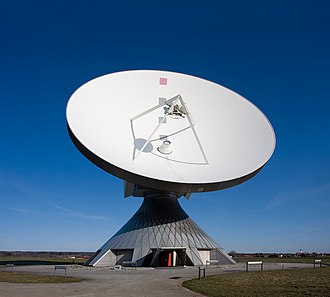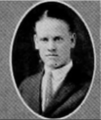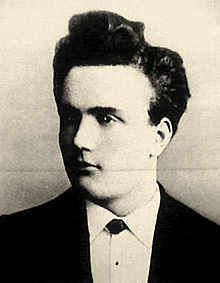Portal:Telecommunication
The Telecommunication Portal

Telecommunication, often used in its plural form or abbreviated as telecom, is the transmission of information with an immediacy comparable to face-to-face communication. As such, slow communications technologies like postal mail and pneumatic tubes are excluded from the definition. Many transmission media have been used for telecommunications throughout history, from smoke signals, beacons, semaphore telegraphs, signal flags, and optical heliographs to wires and empty space made to carry electromagnetic signals. These paths of transmission may be divided into communication channels for multiplexing, allowing for a single medium to transmit several concurrent communication sessions. Several methods of long-distance communication before the modern era used sounds like coded drumbeats, the blowing of horns, and whistles. Long-distance technologies invented during the 20th and 21st centuries generally use electric power, and include the telegraph, telephone, television, and radio.
Early telecommunication networks used metal wires as the medium for transmitting signals. These networks were used for telegraphy and telephony for many decades. In the first decade of the 20th century, a revolution in wireless communication began with breakthroughs including those made in radio communications by Guglielmo Marconi, who won the 1909 Nobel Prize in Physics. Other early pioneers in electrical and electronic telecommunications include co-inventors of the telegraph Charles Wheatstone and Samuel Morse, numerous inventors and developers of the telephone including Antonio Meucci, Philipp Reis, Elisha Gray and Alexander Graham Bell, inventors of radio Edwin Armstrong and Lee de Forest, as well as inventors of television like Vladimir K. Zworykin, John Logie Baird and Philo Farnsworth.
Since the 1960s, the proliferation of digital technologies has meant that voice communications have gradually been supplemented by data. The physical limitations of metallic media prompted the development of optical fibre. The Internet, a technology independent of any given medium, has provided global access to services for individual users and further reduced location and time limitations on communications. (Full article...)
Selected article -
A 300-page iPhone bill from AT&T Mobility mailed in a box was the subject of a viral video made by YouTube personality Justine Ezarik, best known as iJustine, which became an Internet meme in August 2007. Ezarik's video focused on the unnecessary waste of paper, as the detailed bill itemized all data transfers made during the billing period, including every email and text message. Stories of unexpected billing issues began to circulate in blogs and the technical press after the iPhone's heavily advertised and anticipated release, but this video clip brought the voluminous bills to the attention of the mass media.
Ten days later, after the video had been viewed more than 3 million times on the Internet and had received international news coverage, AT&T sent iPhone users a text message outlining changes in its billing practices. The information technology magazine Computerworld included this incident in its list of "Technology's 10 Most Mortifying Moments". (Full article...)
General images
Things to do
 |
Here are some tasks awaiting attention:
|
Selected biography -
Paul Julius Gottlieb Nipkow (German: [ˈpaʊl ˈgɔtliːp ˈnɪpkɔv]; 22 August 1860 – 24 August 1940) was a German electrical engineer and inventor. He invented the Nipkow disk, which laid the foundation of television, since his disk was a fundamental component in the first televisions. Hundreds of stations experimented with television broadcasting using his disk in the 1920s and 1930s, until it was superseded by all-electronic systems in the 1940s.
Nipkow has been called the "father of television", together with other early figures of television history like Karl Ferdinand Braun. (Full article...)
Did you know (auto-generated) -

- ... that in Pacific States Telephone & Telegraph Co. v. Oregon, decided 110 years ago, the U.S. Supreme Court upheld the initiative process?
- ... that Angeline Quinto has recorded songs for at least 35 films and television soundtracks in the Philippines?
- ... that the Fox television network successfully moved to strip an Iowa TV station of its affiliation?
- ... that a Catholic radio station in Texas wields the "velvet hammer" to promote Christianity?
- ... that Gloria Cameron was the first native Jamaican in the UK to appear on the British television programme This Is Your Life?
- ... that one DJ of a Texas radio station challenged another to a cow-milking contest on the streets of the city?
Related portals
Topics
Subcategories
Associated Wikimedia
The following Wikimedia Foundation sister projects provide more on this subject:
-
Commons
Free media repository -
Wikibooks
Free textbooks and manuals -
Wikidata
Free knowledge base -
Wikinews
Free-content news -
Wikiquote
Collection of quotations -
Wikisource
Free-content library -
Wikiversity
Free learning tools -
Wiktionary
Dictionary and thesaurus





























































































